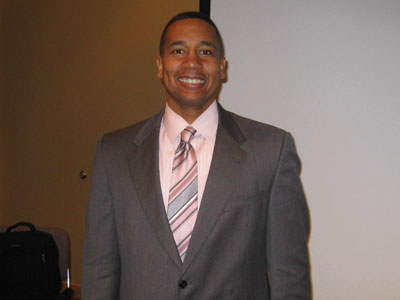“Today’s economy is not paying the bills” explained Juan E. Gilbert, Ph. D. He explained that, to compensate for shrinking revenues, universities have begun encouraging professors to focus their research on marketable products. Dr. Gilbert clarified, “Anybody could have done it but anybody didn’t.” An early success that alerted universities of this potential was Gatorade.
Inspired by the success of Gatorade and other subsequent gold mines many universities began regularizing the process of innovation. Many such institutions have set up technology transfer offices which handle all university patents freeing up researches and dedicating specialists to the process of protecting the university’s intellectual property. “From those institutions 686 new products were introduced into the market place and 555 new start-ups,” explained Gilbert. About 72% of the new companies formed where the primary place of business is in the University’s state. Academia is now unquestionably tied to promoting technical businesses.
Dr. Gilbert spearheaded an effort to create better voting kiosks. What is notable about these efforts is that they illustrate that patents aren’t always the best route, and that processes are more dynamic for creating a better kiosk. Dr. Gilbert explained, “When we wrote the software, we did not patent it; we did not license it.” The only part of the kiosks that Dr. Gilbert and his team patented was the hardware. The motivation for patenting only part of the system came from a need to be completely transparent in regard to the operation of the machine so as to inspire confidence as to its accuracy, this factor is very important in the area of voting.
A current problem that Dr. Gilbert is trying to fix is texting while driving.The system developed is activated when the user switches their phone to a different mode. When the phone is in that mode, the user will be read messages as they come in. The software also provides the functionality to enable the user to reply via voice. When voice text interactions occur, the calls show that they are coming from the number of a third party, however, when that number is contacted, it connects to the person who initiated the conversation so that the communication remains between two people.
On innovation, Dr. Gilbert explained that most innovation comes from being aware. Another important aspect of innovation is looking for problems and trying to fix them. He added, “You work on problems that mean something to you.” Dr. Gilbert also briefly explained how to decide whether an idea has a shot at success while he flashed to a power point slide that had a Venn diagram consisting of three circles. One labeled possible, another labeled desirable, the last labeled viable, Dr. Gilbert emphasized that the intersection of the tree circles is where innovation can occur.
Dr. Gilbert explained that finding an idea that is possible, viable, and desirable isn’t easy but that a lot of original innovation depends very much on personal experience and knowledge. He states, “Creativity begins by using the links between the things we already know.” That being the case, he noted that diversity and uniqueness are enablers for unique innovation.
In a typical scenario, Universities first channel innovation to a technology transfer department. If the technology is deemed worth while a provisional patent that lasts for one year is obtained. The next step, which does not always occur is that an intermediate research foundation is set up. The advantage of a research foundation is that it specializes and is very effective in matchmaking between someone who wants to start a business and an idea to power a business. The last stop for an idea is with an existing or new business where its benefits are distributed to the public for profit.
Out of the idea generation process, the faculty researcher(s) who generate new technology and the university at which they work receive a cut of the proceeds. The relative amounts depend on the institution and faculty do not receive one hundred percent of the profits through this arrangement, but most researchers still find it advantageous. It is much lower risk to the researcher and it saves the researcher a lot of time if the institution handles the marketing of innovations.



'A presentation on entrepreneurialism in academia' has no comments
Be the first to comment this post!